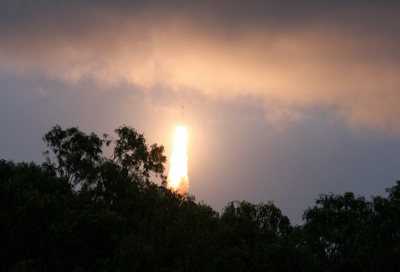
India’s planned spaceshot to the Moon is an easy one to ignore — it’s just another country not named the United States ramping up its space program while the only country to actually land and walk on the moon seems increasingly content to keep its feet on terra firma.
“When completed, this mission will put India in the very small group of six countries which have thus far sent space missions to the moon,” said Krishnaswamy Kasturirangan, a member of the Indian parliament, reinforcing the narrative that this is about prestige and a place at the scientific table.
And maybe it is. But tucked into the New York Times story today is this nugget:
The Indian mission is scheduled to last two years, prepare a three-dimensional atlas of the moon and prospect the lunar surface for natural resources, including uranium, a coveted fuel for nuclear power plants, according to the Indian Space Research Organization.
The moon as strip mine? It’s not that far fetched. A 2004 Popular Mechanics article from former astronaut Harrison Schmitt.
It is not a lack of engineering skill that prevents us from using helium-3 to meet our energy needs, but a lack of the isotope itself. Vast quantities of helium originate in the sun, a small part of which is helium-3, rather than the more common helium-4. Both types of helium are transformed as they travel toward Earth as part of the solar wind. The precious isotope never arrives because Earth’s magnetic field pushes it away. Fortunately, the conditions that make helium-3 rare on Earth are absent on the moon, where it has accumulated on the surface and been mixed with the debris layer of dust and rock, or regolith, by constant meteor strikes. And there it waits for the taking.
